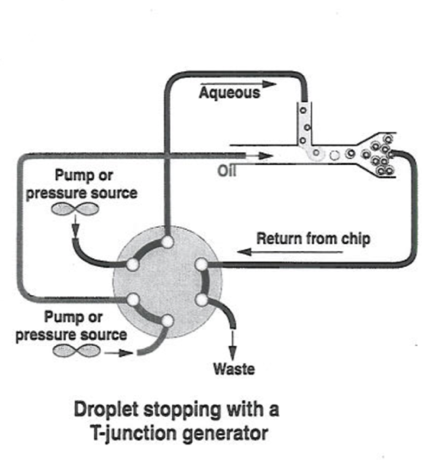The continued expansion of the pharmaceutical and biotechnology industry in North America, coupled with increasing incidents of cancer, HIV, and Alzheimer’s disease around the globe, specifically China and India, has resulted in the growing need for more technologically advanced cell sorting techniques for microbial and disease identification. This need for better clinical diagnostic tools is even more apparent with the increasing threat of antibiotic resistant bacteria. However, high instrument cost coupled with an overall lack of technical knowledge and awareness regarding cell sorting continues to hamper the growth of this market.
Despite these largely avoidable setbacks, advancements in microfluidic systems have given researchers the ability to work with compartmentalized, droplet sized sample volumes. Using droplets not only cuts the cost of reagents but also gives researchers the ability to better maintain and control the cells within the sample as well as provide quantitative information. This allows for more reliable and cost-effective separation and sorting processes. However, one of the limitations of the microfluidic systems is the steady-state phenomenon that generates hundreds to thousands of microdroplets per second. The following technology in this portfolio addresses the steady state issue associated with monodispersed microdroplet generation by preventing droplet coalescence.
The steady-state phenomenon generates thousands of microdroplets per second which is a problem when the stream of droplets needs to be slowed down or stopped. LLNL technology provides a method for generating and trapping microdroplets at a desired location and subsequently stopping the stream of microdroplets without droplet coalescence. These microdroplets can then be chemically reacted, heated, cooled, optically interrogated, sorted and analyzed for as long as desired before channel flow is restarted. By trapping microdroplets at desired locations, greater optical or electromagnetic interrogation can occur. These results in a more thorough analysis of target analytes as well as increases reliability for techniques such as quantitative PCR. These attributes of the technology make it extremely useful for single-genome amplification and sequencing. The system also allows for channel washing between experiments.
The figure shows a representative schematic of the technology. Modifications such as additional droplet interaction and droplet generating channels can be applied to this technology.
- Generating and trapping microdroplets at a desired location
- Eliminates droplet coalescence
- Greater optical or electromagnetic interrogation of trapped droplets
- Biowarfare detection - identifying, detecting, and monitoring biothreat agents that contain nucleic acid signatures, such as spores, bacteria, viruses, etc.
- Automated processing, amplification, and detection of host or microbial and viral DNA/RNA in biological fluids for medical purposes
- Automated processing and detection of proteomic signatures in biological fluids
- High throughput genetic screenings for drug discovery
- Genetic sequencing and SNP detection
- On-chip cell isolation
- Cell cytometry or viral cytometry in fluids drawn from clinical or veterinary patients
- Food & beverage safety testing
- Forensics analysis
- PCR and single cell sequencing on trapped droplets



